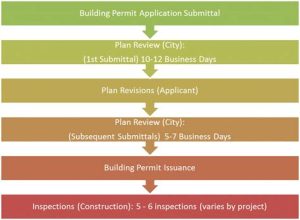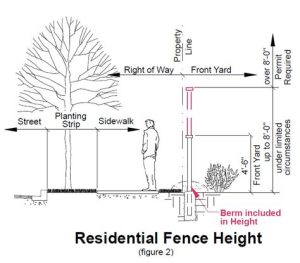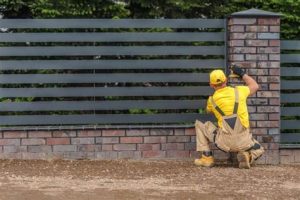Discover essential tips for successful construction projects, including material selection, layout planning, permit checks, ground preparation, and tool selection.Are you considering taking on the DIY project of installing your own fence? A well-constructed fence can enhance your property’s curb appeal, provide privacy, and offer security. However, it’s essential to prioritize safety during the installation process to ensure a successful and worry-free project. In this blog post, we will guide you through essential safety tips, from selecting the right materials to preparing the ground properly. We’ll also discuss the importance of understanding local regulations and permits, as well as using the appropriate tools for the job. With the right preparation and knowledge, you can confidently install a fence that meets both your aesthetic and functional needs while minimizing potential risks. Let’s dive into the crucial steps to ensure your fencing project is safe and successful!
Choose the Right Material
When it comes to installing your own fence, one of the most critical decisions you’ll need to make is to choose the right material. The material you select will impact not only the aesthetic appeal of your property but also its durability and maintenance requirements.
| Material | Pros | Cons |
|---|---|---|
| Wood | Natural look, easy to install | May rot, requires regular maintenance |
| Vinyl | Durable, low maintenance | Can be more expensive |
| Chain Link | Cost-effective, secure | Less privacy, not very aesthetic |
| Metal | Long-lasting, low maintenance | Can rust without proper treatment |
Each material serves different purposes, depending on what you value most—be it affordability, appearance, or longevity. It’s crucial to assess your specific needs and environmental factors such as climate conditions and local wildlife before making a decision.
Furthermore, consider the level of privacy and security you require. For instance, if your primary concern is keeping pets contained or creating a visual barrier from neighbors, a solid wood or vinyl fence might be best. On the other hand, if security is your main focus and aesthetics are less of a concern, then chain link or metal may suffice.
Ultimately, investing time in researching and selecting the right material will pay off in the long run. A well-chosen fence not only enhances your property’s value but also provides the functional benefits you need for years to come.
Plan Your Layout Carefully
Planning your layout is a crucial step in the fence installation process. A well-thought-out layout can save you both time and resources while ensuring your fence serves its intended purpose effectively. First and foremost, you need to consider the boundaries of your property. It’s essential to check your property lines to avoid potential disputes with neighbors down the line.
Next, make sure to take accurate measurements. Use a measuring tape or a wheel to measure the dimensions accurately. Create a detailed sketch of your intended layout, marking any gates, turns, or slopes that will influence the installation process. You might even want to utilize online tools or software designed for landscape planning to visualize your fence layout before starting the physical work.
Lastly, don’t forget to consider the purpose of your fence. Is it primarily for privacy, security, or aesthetics? Understanding your main goal will help in deciding the appropriate height, material, and style of your fence. Taking the time to plan your layout thoroughly will not only enhance the functionality of your fence but also contribute to a more attractive landscape overall.
Check Local Regulations and Permits
When it comes to installing your own fence, one of the most crucial steps is to check local regulations and permits that may apply to your project. Many municipalities have specific rules regarding the height, materials, and placement of fences, which can vary drastically from one area to another. Ignoring these guidelines could lead to fines or even the need to remove your newly installed fence.
Before you start your installation, take the time to research your local zoning laws and building codes. Contact your local government or visit their website to find detailed information.
| Regulation Type | Description |
|---|---|
| Height Restrictions | Most areas have a maximum height for fences, particularly in residential zones. |
| Setback Requirements | Some areas require fences to be a certain distance from property lines or sidewalks. |
| Materials Allowed | Certain materials may be banned or only specific types may be permitted. |
In addition to local regulations, you may need to obtain a building permit before you begin your project. This typically involves submitting your fence plans to your local building department for approval. Always check to ensure that you have the necessary permissions in place; this will help you avoid potential complications and give you peace of mind as you proceed with your fence installation.
Prepare the Ground Properly
Before diving into the installation of your fence, it’s critical to prepare the ground properly. This initial step can save you time, effort, and ensure the durability of your fence.
Start by checking the area where you plan to install the fence. Remove any debris such as rocks, sticks, or old fencing materials that could obstruct your work. Additionally, consider using a soil probe to assess the soil type; knowing whether the soil is sandy, clayey, or rocky can help you choose the right tools and techniques for the job.
It’s also essential to mark the boundaries of your fence by using stakes and string to create a visual outline. This will help you visualize the space you’ll be working within and alleviate any potential mistakes during installation. Lastly, look for any underground utilities to avoid damaging them while digging. Safety should always be your top priority!
Use the Right Tools for the Job
When embarking on a DIY fence installation project, using the right tools is essential for achieving a successful outcome. Having the appropriate tools not only makes the job easier but also ensures your safety and the durability of the fence.
- Post Hole Digger: For digging holes for your fence posts.
- Level: To ensure your fence is straight and properly aligned.
- Measuring Tape: To measure distances accurately.
- Power Drill: For attaching the fence panels to the posts.
- Saw: For cutting the fence material to the correct size.
Using the right tools contributes significantly to the quality of your work. Investing in good quality tools can save you time and effort in the long run, while also reducing the risk of accidents during installation.
Frequently Asked Questions
What tools do I need to install a fence safely?
Essential tools include a post hole digger, level, tape measure, hammer, and safety gear like gloves and goggles.
How deep should I dig the post holes?
Post holes should generally be one-third the height of the fence above ground, which usually means digging them at least 2 feet deep for stability.
What type of fence is easiest to install for a beginner?
Vinyl and chain link fences are often considered easier to install for beginners compared to wood, as they require less intricate cutting and fitting.
Are there local regulations I need to consider?
Yes, always check local building codes and regulations, as you may need a permit or have specific requirements regarding fence height and setback.
How can I mark my property lines before installation?
You can mark your property lines by consulting your property deed, hiring a surveyor, or using stakes and string to outline where your fence will go.
What are some common mistakes to avoid when installing a fence?
Common mistakes include not checking for underground utilities, failing to level the posts properly, and not ensuring the fence aligns with property lines.
How can I maintain my fence after installation?
Regularly inspect for damage, clean it periodically, and apply protective treatments as needed, particularly for wood fences, to prolong their lifespan.





